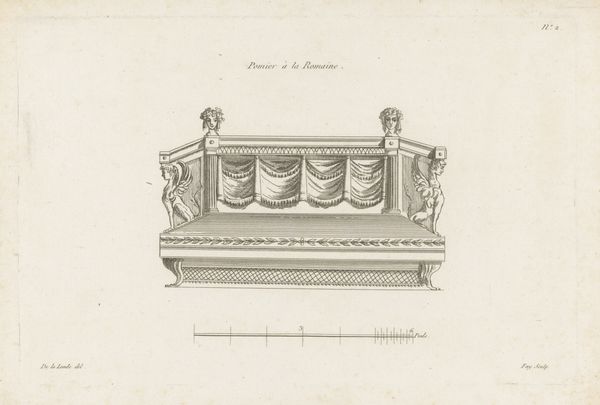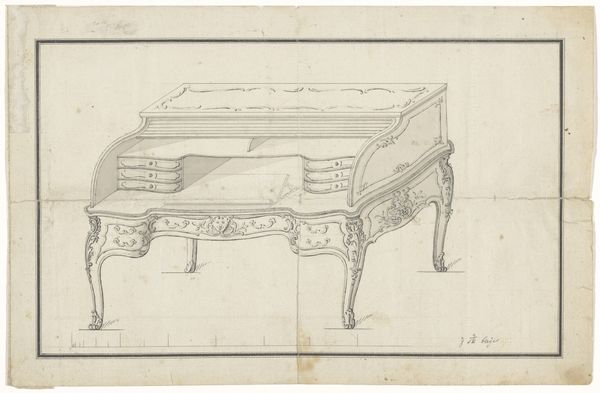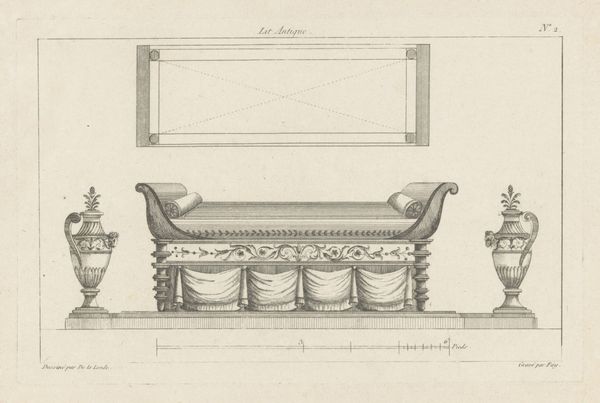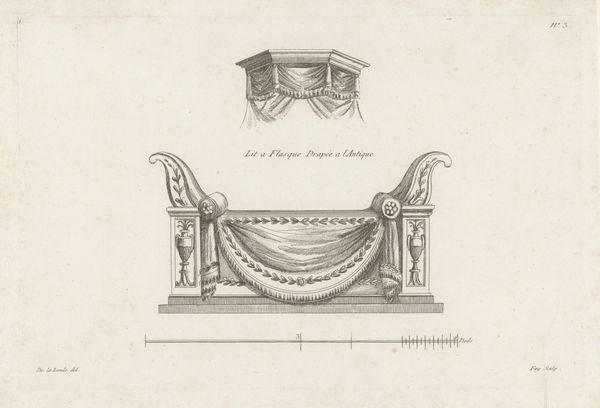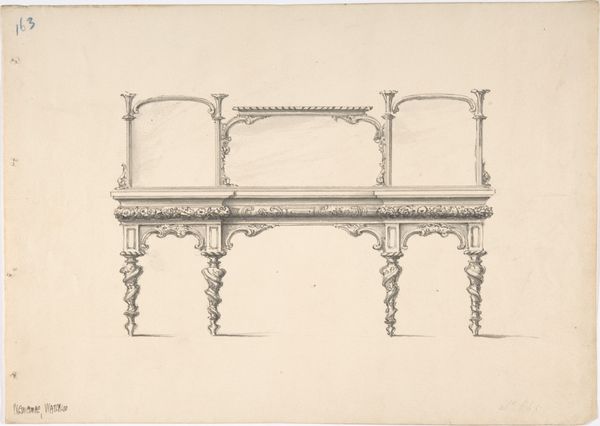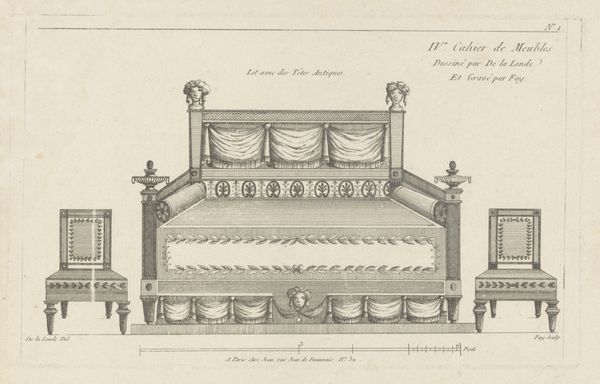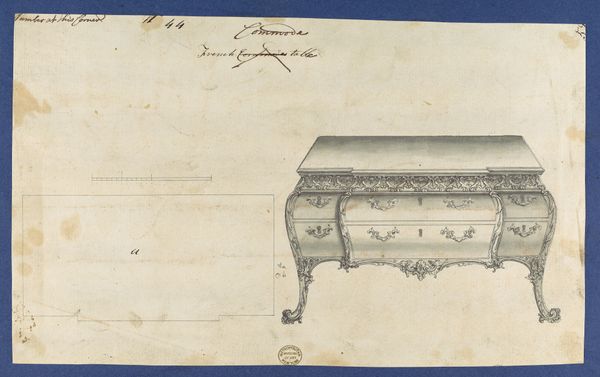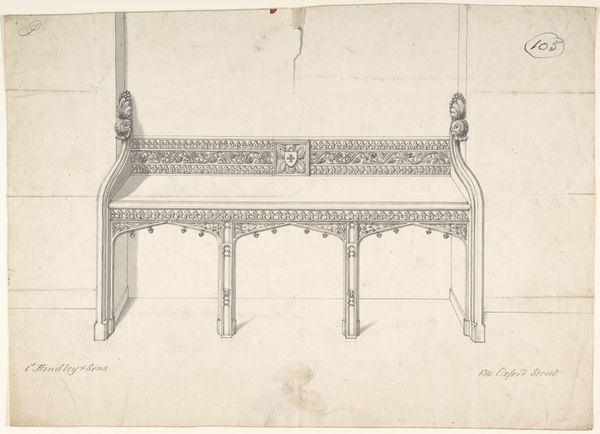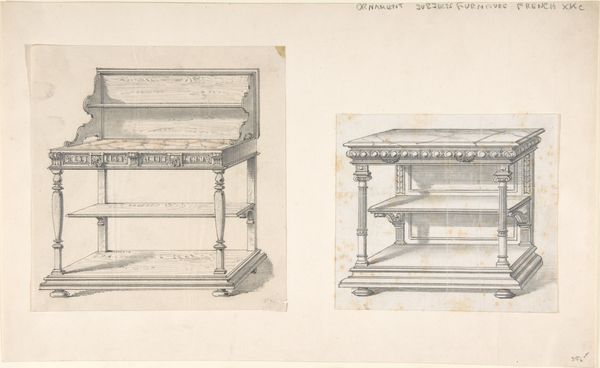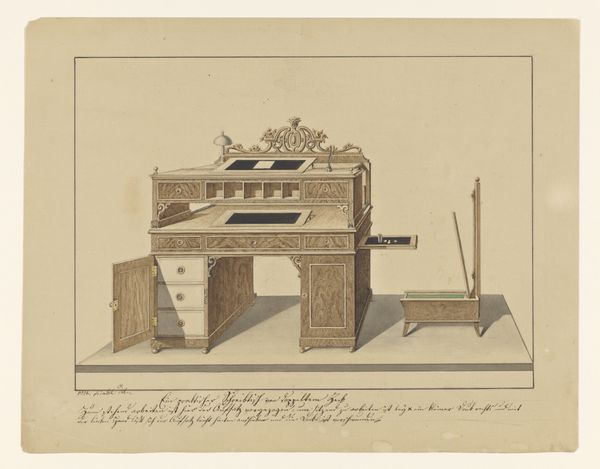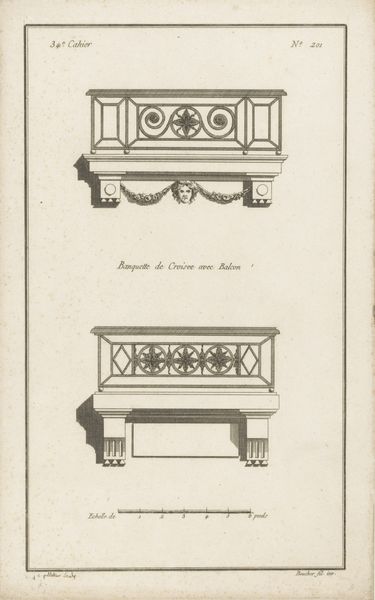
drawing, pencil, engraving
#
drawing
#
neoclacissism
#
pencil sketch
#
furniture
#
form
#
geometric
#
pencil
#
line
#
pencil work
#
engraving
Dimensions: height 195 mm, width 297 mm
Copyright: Rijks Museum: Open Domain
Editor: Here we have Jean Baptiste Fay's "Sofa", an engraving made between 1784 and 1796, currently held at the Rijksmuseum. It’s a very precise drawing of what looks like an ornate sofa. What do you make of this drawing? Curator: Well, it’s more than *just* a drawing of a sofa. It's a window into the world of late 18th-century taste and the growing influence of Neoclassicism. Think about where this was produced and viewed. Was it intended for personal enjoyment, as design advertisement or pattern, or was it used to encourage public morality? Editor: I hadn't considered that. The Neoclassical style does feel very...stately, even moralizing somehow. Curator: Exactly. The piece also raises questions about how ancient cultures were being reinterpreted and repurposed for contemporary audiences. Consider, for example, what design books communicated to its late 18th century consumer. Was that simply aesthetics, or an entire value system? How does this impact design of furniture today? Editor: It's amazing to see how something as simple as a sofa design could be so deeply embedded in the culture and political ideology of the time. Curator: Indeed. And let’s not forget that drawings and engravings like this played a key role in disseminating new styles. Think about the printing practices, and how things might get changed in circulation! Now I want to know, how does *this* particular sofa’s design potentially encourage that value system? Editor: I guess it's not just about having a pretty sofa, but about showcasing a connection to classical virtues. This makes me appreciate that objects are very often social and political statements in disguise! Curator: Precisely. I’m pleased we’ve got somewhere, here!
Comments
No comments
Be the first to comment and join the conversation on the ultimate creative platform.
